Fraud
In the internet age, law enforcement agencies have taken a harder approach to crimes involving fraud. Although fraud isn’t a violent crime, these cases can have harsh punishments.
Guidelines for fraud are broad, there are various categories of fraud covered under both Minnesota and Federal law. This makes the laws complex and overwhelming.
Our attorneys have worked with many fraud cases on both the Federal and Minnesota level. We can work to fight your fraud charges.
Table of contents
What is a Fraud Crime?
Common Types of Fraud Crimes in Minnesota
Fraud Penalties
What is a Fraud Crime?
Fraud is an umbrella term for various offenses intended to swindle or deceit someone. It’s an offense that involves deception to steal money or property for the offender’s personal gain.
This crime usually involves financial matters and can take various forms. Common types of fraud include writing fake checks, using another person’s credit card, or forging someone’s signature . In some cases, even the mere possession of fake notes or items is enough to lead to a fraud conviction.
Authorities must prove that you have used falsehoods, lies, dishonesty, or deception to try to gain some kind of benefit. Often referred to as white-collar crimes, fraud generally involves the following elements:
An individual or organization knowingly misrepresenting an important fact
Misrepresented facts intended to fool the victim
The victim believed and relied on the misrepresentation of facts
A loss resulted due to the offender’s deceit
Fraudulent acts are usually driven by the desire to escape criminal culpability or financial gain.
Authorities in Minnesota can charge fraud crimes as misdemeanors or felonies. This depends on the specific facts of a case and the defendant’s criminal history.
Some fraud cases are automatic felonies. Many fraud offenses are also considered to be federal crimes. This means that authorities can prosecute you in both state and federal court.
Common Types of Minnesota Fraud Crimes
Credit Card Fraud
There are many ways that a person could commit a credit card fraud offense. Several examples include:
Using another person’s credit card without their consent or knowledge.
Selling, using, or buying another person’s credit card or debit card information.
Producing, distributing, or using forged credit cards.
Using a credit card that you know has been illegally obtained or stolen.
Credit card offenses can easily cross state lines. Therefore, it is common that authorities prosecute this offense at both state and federal levels. A person can face a felony conviction and could end up serving time in a state or federal prison.
Insurance Fraud
Insurance providers are often the target of fraud schemes. This crime usually involves someone attempting to get payments by filing false claims.
Minnesota takes insurance fraud very seriously due to the high number of insurance fraud cases that occur each year. Prosecutorial agencies have special units dedicated to prosecuting insurance fraud cases.
Insurance fraud cases can involve:
Life insurance
Auto insurance
Worker’s compensation
Healthcare
Medicaid
Unemployment insurance
Homeowner’s insurance
Insurance fraud due to arson
Examples of insurance fraud include:
Inflating the price of a claim
Staging an accident
Setting your property on fire
Reporting something stolen when it wasn’t
Over-billing for medical service rendered or billing for services not provided
Receiving kickbacks for prescribing certain drugs
Collecting unemployment insurance in two or more states
Falsifying your work-search efforts
Trying to secure fraudulent welfare benefits
Exaggerating the extent of the injury or faking an injury to receive worker’s compensation insurance
Insurance fraud can be a felony, and you could face high fines and prison time if convicted. In addition, the penalty may require you to pay restitution to the victim.
Money Laundering
Money laundering happens when a person engages in business to conceal an illegal source of funds or property.
In other words, a person receives money from a crime and uses another business to make it appear as if the money is from legitimate means. For instance, a drug dealer uses a car wash business as a “front” for a money-laundering scheme.
While authorities often consider money laundering a white-collar crime, it is a very serious offense. If the alleged money laundering activities crossed state lines, a Federal agency may get involved.
A conviction for money laundering in Minnesota can result in major consequences, including prison time and fines.
Forgery
Many fraud cases also involve the use of falsified signatures, fake documents, and other phony instruments.
This is called forgery. It can be as simple as a fake signature on a contract or as sophisticated as using computers to change routing numbers on checks.
A forgery offense against an elderly person can form the basis for criminal charges of elder abuse.
Authorities can charge forgery in connection with check fraud and credit card fraud. Here, the defendant may have forged signatures on receipts or checks.
There is also an aggravated forgery, which occurs when someone alters public records, official seals, etc.
Forgery Penalties
The penalties for forgery can vary greatly depending on the elements of the case.
If someone is guilty of check forgery over $35,000, they may face a maximum of 20 years in prison and/or a fine of $100,000.
Forgery of checks over $2,500 can result in a maximum prison sentence of 10 years and/or a fine of $20,000.
Finally, if the forged check was more than $250 but less than $2,500, the maximum penalty is five years in prison and/or a fine of $10,000.
Embezzlement
The offense of embezzlement involves a misuse of another person’s property. This occurs when you’re suspected of stealing the money or property you had lawful possession of due to your job, position, or role.
A person committing embezzlement breaches trust when they use money or property from their job for their own personal gain. As provided by Section 609.54 of Minnesota’s statutes, a person in the position of safeguarding state funds must keep an entry of each payment and transfer.
It is also not allowed to convert funds for their own use, other than in the name of the state of Minnesota. Failure to follow these conditions can result in felony embezzlement charges.
Embezzlement Penalties
When the value of the embezzlement is $2,500, or less, the penalty is a maximum jail time of five years and/or a fine of up to $10,000.
If the embezzlement is over $2,500, the penalty is up to ten years in prison and/or a fine of up to $20,000.
Real Estate and Mortgage Fraud
Real estate fraud involves misrepresenting or concealing information about a real estate transaction. An investigation into a real estate fraud case may also lead to additional charges of tax fraud or bankruptcy fraud.
There are two main categories of real estate fraud:
Fraud for housing: When homebuyers lie on mortgage applications. Submitting incomplete information about income to get a loan.
Fraud for profit: Involves those who work in the mortgage industry, such as appraisers, loan originators, and bankers. Inflate appraisals, falsify supporting documents and give kickbacks on mortgages.
There are many common types of mortgage fraud. These include, loan modification offers, equity stripping, and fraudulent supporting loan documentation.
Wire Fraud
Wire fraud is a scheme to steal property by using wire, television, radio, or the internet in interstate or foreign commerce.
Similar to regular fraud, only wire fraud involves electronic communication. Common charges associated with wire fraud include:
Identity theft
eBay fraud
Credit card fraud
False advertising
Pyramid or Ponzi scheme
False advertising
Telephone marketing scams
Identity Theft
When someone uses another person’s identity, such as their Social Security number to open accounts or commit a crime in that person’s name.
This is a clear violation of Minn. Stat. §609.527 (2000). As provided by this section, a person who uses another person’s identity with the intent to commit any illegal activity is guilty of identity theft. Some examples include:
using a false pretense to obtain someone’s identity.
pretending to be another person while trying to cash a check with their name on it.
unlawful use of a scanning device or re-encoder.
posing as someone online.
using another person’s credit card to make an online purchase.
The sentence imposed for identity theft will depend upon the amount of money stolen and the number of victims. Authorities can and will aggregate the number of victims and/or the amount stolen over a period of 6 months. When this happens, you can be easily charged with a felony on what would otherwise be a misdemeanor violation.
Identity Theft Penalties
Identity theft penalties in Minnesota depend on how many victims were involved and the amount of money stolen.
The lowest offense level happens when only only one direct victim was involved and and the total, combined loss is $250 or less. This offender faces a maximum jail sentence of 90 days and/or a fine of $1,000.
The most severe instance of identity theft involves eight or more victims and a combined loss of more than $35,000. This penalty is up to 20 years in prison and fines of up to $100,000.
Tax Evasion
The Internal Revenue Service takes a strict approach to tax collection at the federal level, while states also have their own tax laws. States use financial tools like interest, fines, and liens to enforce payment.
The Minnesota Department of Revenue takes care of the enforcement of taxes in the state. DOR handles investigations involving tax fraud and evasion. It also relies on tips from citizens to get hold of individuals who do not follow state tax laws.
There’s a difference between tax avoidance and tax evasion. Tax evasion is the intentional avoidance of paying taxes owed by the government.
Tax avoidance, refers to structuring your financial transactions in a manner that will allow you to get the largest tax benefits. This is legal to some extent, but tax evasion is a crime. Being involved in tax fraud means that you’re misrepresenting your income to the IRS.
Examples of activities considered tax fraud or evasion include:
Overestimating deductions or expenses
Underreporting income
Claiming false deductions
Failing to collect employment taxes
Claiming personal expenses as business expenses
Violating employer withholding requirements
Filing false returns with intent to defraud
Tax fraud and tax evasion are very serious crimes punishable by substantial fines and prison sentences.
Minnesota Fraud Penalties
In Minnesota, fraud crimes can be misdemeanors or felonies. The charges you will face will depend on various factors, such as the specifics of your cases, the statutes that apply, and your criminal history. In some cases, authorities consider fraud crimes thefts. This means that the level of the charges filed against you will depend on the amount of money stolen. Courts may impose hefty fines and prison sentences, ranging from a few months to many years.
A conviction can impact a person’s current and future employment. Authorities may prevent an individual from working at a bank in a position that deals with finances. In other words, it may be difficult to get a good job. Beyond work and school, a criminal record for fraud could impact your child custody case and immigration status. And you can lose the right to own a firearm if convicted of a felony.
Schedule a free consultation
assistant@ringstromlaw.com
814 Center Ave. Ste. 5
Moorhead, MN 56560
218-284-0484

